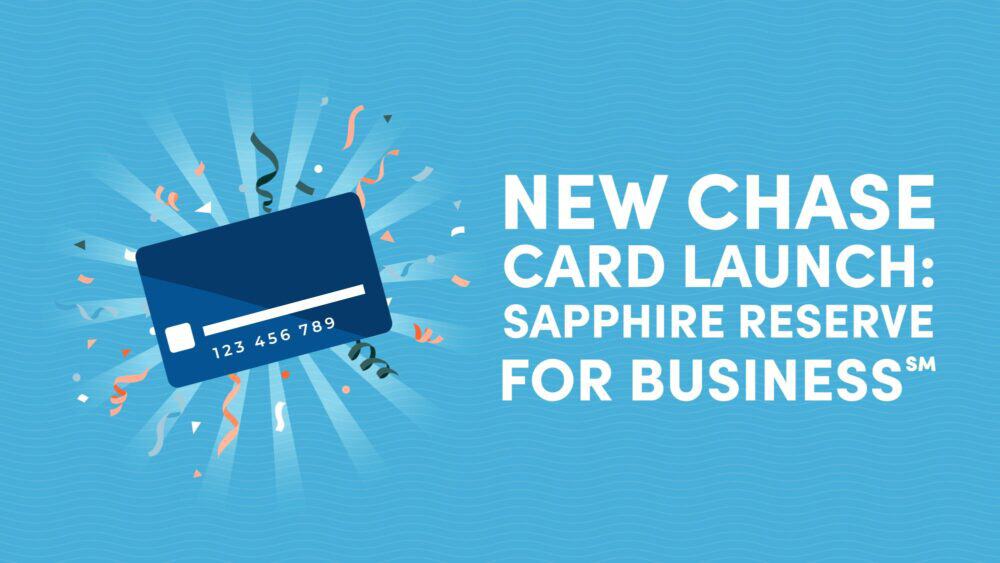
10xTravel is part of an affiliate sales network and receives compensation for sending traffic to partner sites, such as CreditCards.com. This compensation may impact how and where links appear on this site. This site does not include all financial companies or all available financial offers. Terms apply to American Express benefits and offers. Enrollment may be required for select American Express benefits and offers. Visit americanexpress.com to learn more.
Note: Some of the offers mentioned below may have changed or may no longer be available. The content on this page is accurate as of the posting date; however, some of our partner offers may have expired. You can view current offers here.
The Chase Sapphire Preferred® Card and Capital One Venture Rewards Credit Card are two fan favorites. While there’s certainly value in holding both cards simultaneously, it’s not a strategy for everyone. If you want only one, which card would you go for?
Let’s compare the Chase Sapphire Preferred and Capital One Venture Rewards cards to find out which is best suited to you, as well as check out some alternatives.

The Basics: Chase Sapphire Preferred and Capital One Venture
When we think of cards that offer the biggest bang for their buck, it’s easy to focus on premium travel rewards cards with flashy perks and hefty annual fees. But many cards on the lower end of the annual fee spectrum offer significant perks and rewards rates with reasonable annual fees.
The Chase Sapphire Preferred and Capital One Venture Rewards Credit Card are the two excellent cards for balancing perks with fees. The cost of holding both cards is relatively small—$95 per year—and they both offer rewards on everyday spending combined with a host of domestic and international airline and hotel transfer partners, making for lucrative redemption opportunities.
For those starting out in the miles earning game or those wanting a simple card to earn miles toward travel redemptions, you couldn’t go wrong with either card. However, there are a few differences we’d like to point out.
Let’s take a look at the Venture vs. Sapphire cards, to see which one is best suited to your spending habits and travel goals.
Chase Sapphire Preferred: A Closer Look
The Chase Sapphire Preferred Card offers lucrative bonus spending categories, cardholder perks and robust travel protections.
This card comes with the following bonus spending categories:
- 5X points on travel purchased and booked through Chase Travel℠ (excluding hotel purchases that qualify for the $50 annual hotel credit)
- 3X points on dining, including eligible takeout, delivery services and dining out
- 3X points on online grocery purchases (excluding Walmart, Target and wholesale clubs)
- 3X points on select streaming services
- 2X points on all other travel purchases
- 1X points on all other purchases
Not only does the card reward spending on travel purchased through its portal, it also focuses on earning you lucrative rewards on everyday spending. From dining and online grocery shopping to select streaming services, the Sapphire Preferred offers a competitive 3X points on every dollar spent.
In addition to its bonus spending categories, the Sapphire Preferred offers the following cardholder perks:
- An annual 10% points bonus, every cardholder anniversary
- An annual $50 hotel credit, cutting down the cost of a cash booking
- Bonus points with Lyft—you’ll earn 5X points on purchases made with Lyft through September 30 2027. (3X points on top of the usual 2X points earned on travel purchases)
- Bonus points with Peloton—you’ll earn 5X points on equipment and accessory purchases over $150 with Peloton, with a maximum of 25,000 total points, through March 31, 2025.
- A one-year complimentary DashPass membership—you’ll enjoy reduced service fees and waived delivery fees on DoorDash and Caviar orders. You’ll need to activate this benefit by Dec. 31, 2027 to be eligible. You’ll also get up to $10 off a month on non-restaurant DoorDash orders as a DoorDash member.
- Travel insurance perks—this card offers travel insurance perks that out-do those offered by many premium travel rewards cards, making it perfect for those who are frequently in the skies or on the road.
These perks add up, particularly the annual 10% points boost, making the card even more valuable.
The Sapphire Preferred’s welcome offer is particularly valuable.
The typical welcome offer is 60,000 to 100,000 points after you spend $5,000 within the first three months of card membership. Chase Sapphire Preferred cardholders can receive a fixed rate of 1.25 cents per point when they redeem through Chase Travel℠, meaning your welcome offer is worth $750 to $1,250, depending on when you earn it.
With this welcome offer alone, you’ll more than offset the annual fee, as well as fund some serious award travel redemptions.
Chase Sapphire Preferred® Card
75,000
bonus points
after you spend $5,000 on purchases in the first 3 months from account opening.
Annual Fee: $95
Capital One Venture: Exploring the Essentials
The Capital One Venture Rewards Credit Card offers simple but competitive rewards, as well as a taste of luxury travel perks.
The Venture Rewards offers the following bonus spending categories:
- 5X miles per dollar spent on hotels and rental cars booked through Capital One Travel
- 2X miles per dollar spent on all other purchases
While these categories are a bit light compared to those offered by the Sapphire Preferred, the simplicity of the Venture Rewards bonus categories is part of its appeal.
Instead of needing to track which card to use for which purchase, you can always pay with your Venture Rewards card and know you’re earning 2X miles for every dollar you spend. This makes the card not only convenient but also perfect for some of the trickier purchases to earn rewards on. For example, paying for your utility bills, college tuition fees or online shopping purchases with your Venture Rewards card will net you double miles on all of your spending.
The rewards don’t stop there. The Venture Rewards card also comes with the following perks:
- Up to $100 statement credit for a Global Entry or TSA PreCheck® application fee, every four years
- Complimentary Hertz Five Star® status*
With a Global Entry or TSA PreCheck statement credit, you’ll enjoy expedited security processing when flying. If you tend to rent a car when traveling, Hertz Five Star status will give you access to a wider selection of vehicles, among other perks.
The Venture Rewards Credit Card has a typical welcome offer of 60,000 to 75,000 miles after you spend $3,000 to $4,000 within the first three months of card membership. If you redeem your miles for travel through the Capital One Travel portal, the welcome offer is worth between $600 and $750.
Occasionally, the welcome offer goes as high as 100,000 miles, but with a minimum spending requirement of $20,000. Compared to the Sapphire Preferred, you’ll have to spend up to five times more to earn the same number of points, making this less competitive than the Sapphire Preferred.
Key Differences at a Glance
Here’s an overview of the features and differences of the Chase Sapphire Preferred vs. Capital One Venture Rewards cards.
Capital One Venture Rewards Credit Card
75,000
miles
once you spend $4,000 on purchases within 3 months from account opening, equal to $750 in travel.
Annual Fee: $95
| Feature | Chase Sapphire Preferred Card | Capital One Venture Rewards Credit Card |
|---|---|---|
| Annual Fee | $95 | $95 |
| Bonus Spending Categories | • 5X points on travel purchased and booked through Chase Travel℠ (excluding hotel purchases that qualify for the $50 annual hotel credit) • 3X points on dining, including eligible takeout, delivery services and dining out • 3X points on online grocery purchases (excluding Walmart, Target and wholesale clubs) • 3X points on select streaming services • 2X points on all other travel purchases • 1X points on all other purchases | • 5X miles per dollar spent on hotels and rental cars booked through Capital One Travel • 2X miles per dollar spent on all other purchases |
| Perks | • Annual 10% points bonus • Annual $50 hotel credit • Competitive welcome offer worth between $750 and $1,250 • Bonus points with Lyft and Peloton • Complimentary DashPass membership • Up to 14 airline and hotel transfer partners • Points can be redeemed for 1.25 cents apiece through Chase Travel℠ | • Up to $100 statement credit for a Global Entry or TSA PreCheck® application fee, every four years • Lucrative welcome offer worth between $600 and $750 (occasionally the offer goes up to $1,000 worth of miles) • Complimentary Hertz Five Star® status • No foreign transaction fees • Up to 18 airline and hotel transfer partners |
| Travel Protections | • Trip cancellation and interruption insurance • Trip delay reimbursement • Lost, damaged or stolen luggage reimbursement • Baggage delay reimbursement • Auto rental collision damage waiver • 24 hour travel accident insurance and common carrier insurance | • Trip cancellation and interruption insurance** • Trip delay reimbursement • Baggage delay reimbursement • Auto rental collision damage waiver • 24 hour travel accident insurance and common carrier insurance |
Rewards Structure Face-Off: Earning and Redeeming Points
Let’s compare the rewards structure of the Venture vs. Sapphire card.
Chase Ultimate Rewards: Flexibility and Transfer Partners
The Chase Ultimate Rewards program offers lucrative opportunities for award travel, as well as the option to redeem your points for cash back at 1 cent apiece.
Chase has 14 airline and hotel partners to whom you can transfer your Ultimate Rewards points at a 1:1 ratio. These include:
- Aer Lingus AerClub
- Air Canada Aeroplan
- British Airways Executive Club
- Emirates Skywards
- Air France-KLM Flying Blue
- Iberia Plus
- JetBlue TrueBlue
- Singapore Airlines KrisFlyer
- Southwest Airlines Rapid Rewards
- United MileagePlus
- Virgin Atlantic Flying Club
- IHG Rewards Club
- Marriott Bonvoy
- World of Hyatt
This diverse range of transfer partners enables point redemptions for travel across the world, whether it’s a domestic coast-to-coast flight or long-haul trip of your dreams to Asia.
If you redeem through Chase Travel℠, Sapphire Preferred cardholders can redeem their points for 1.25 cents apiece. Given that you can pool your Ultimate Rewards points across cards and transfer them from Chase Freedom Unlimited® and Chase Freedom Flex® cards, you have an effective transfer ratio of 1:1.25, making your rewards go further.
If you already have a Chase business card, you can merge Chase business and personal accounts together to pool your Ultimate Rewards for easier and more lucrative travel redemptions.
Capital One Miles: Simplicity and Versatility
Capital One Miles is an equally lucrative rewards program, allowing travel bookings, mile transfers to travel partners and cash back redemptions at 1 cent apiece.
Capital One has 15 airline and three hotel partners, including the following:
- Aeromexico Club Premier
- Accor Live Limitless (ALL)
- Air Canada Aeroplan
- Air France-KLM Flying Blue
- Avianca LifeMiles
- British Airways Executive Club
- Cathay Pacific Asia Miles
- Choice Privileges
- Emirates Skywards
- Etihad Guest
- EVA Air Infinity MileageLands
- Finnair Plus
- Qantas Frequent Flyer
- Singapore Airlines KrisFlyer
- TAP Miles&Go
- Turkish Airlines Miles&Smiles
- Virgin Red
- Wyndham Rewards
Chase takes the lead in respect to the number of domestic airline partners—Capital One has no domestic U.S. airline partners. However, Capital One offers a wide array of international partners.
Likewise, you can book award travel with domestic airlines through the rewards programs of Capital One’s partner airlines, thanks to airline alliances. For example, it’s easy to book American Airlines award flights through British Airways—and a good idea to do so if you want to save points on short-haul domestic award flights.
If you instead opt to book award travel through the Capital One Travel portal, you’ll redeem your points for 1 cent apiece.
For a comprehensive dive into Capital One’s rewards program, check out this guide: Capital One rewards points value.
Maximizing Value: Strategies for Both Cards
Both rewards programs offer flexible redemption opportunities and a wide range of transfer partners.
If you’re happy to keep track of which cards you’re using for your spending, the Sapphire Preferred can pay off when it comes to earning rewards on bonus category purchases. Whether it’s dining, online grocery shopping, streaming or travel, you can get a solid bang for your buck, leveraging your everyday spending for big rewards over time.
Alternatively, if you want a card that you can pull out in any situation, the Capital One Venture Rewards is the card for the job. It offers simplicity and a competitive baseline rewards rate of 2X miles per dollar spent. This makes it the perfect card for earning double miles on purchases that typically fall outside of bonus spending categories, such as utility bills, online shopping or even wedding expenses.
Both the Sapphire Preferred and Venture Rewards cards offer competitive rewards rates when it comes to making cash bookings through their respective card issuer travel portals. In both cases, you’ll earn 5X points (or miles, with the Venture One card) per dollar spent. So when cash prices are on the lower end of the spectrum, saving your points by paying the booking upfront with cash can help you accumulate even more points or miles in the long-run.
The only small difference between earning points or miles on cash bookings made through each card issuer’s portal is that the Sapphire Preferred will earn you 5X points on all travel purchases, while the Venture Rewards 5X miles rewards rate is limited to hotel and rental car bookings.
When it comes to redeeming your points for travel, the Sapphire Preferred gives you a redemption rate of 1.25 cents apiece, while the Venture Rewards gives you a rate of 1 cent apiece. That means 60,000 Ultimate Rewards will work out to $750 worth of travel while 60,000 Capital One Miles will be worth $600. The greater the number of points you’re redeeming, the greater this difference will be.

Travel Benefits Showdown: Beyond the Points/Miles
Both the Chase Sapphire Preferred and Capital One Venture are first and foremost travel rewards credit cards. That means you can expect lucrative travel perks and rewards.
Let’s compare the travel perks and rewards offered by Chase Sapphire Preferred vs. Capital One Venture.
Chase Sapphire Preferred Travel Perks
The Sapphire Preferred comes with an annual $50 credit for eligible hotel stays. While this isn’t a massive amount of savings, it can still help cut the costs on a cash booking.
It earns 5X points per dollar spent on travel purchased through Chase Travel℠, excluding hotel purchases that qualify for the $50 annual hotel credit. If cash prices are low, booking a family hotel stay for $1,000 through the portal would net you 5,000 points to put toward future award travel.
The Sapphire Preferred earns 2X points on all other travel purchases, with a broad definition as to what is considered “travel,” including cruise lines, campgrounds, car rental, timeshares and more.
Chase’s wide range of domestic and international airline transfer partners makes redeeming your points for award travel easy and lucrative.
Chase Sapphire Preferred® Card
75,000
bonus points
after you spend $5,000 on purchases in the first 3 months from account opening.
Annual Fee: $95
Capital One Venture Travel Advantages
The Venture Rewards card offers more attractive travel perks than the Sapphire Preferred.
The Venture Rewards card earns 5X miles per dollar spent on hotels and rental cars when booked through the Capital One Travel portal.
Cardholders also enjoy a statement credit of up to $100 for a Global Entry or TSA PreCheck application fee, every four years. That way, you’ll be able to skip the long waits at immigration and security, swapping them for some pre-flight relaxation.
Additionally, you’ll receive Hertz Five Star status, opening up a wider selection of rental cars to you as well as a 25% points bonus on rentals, among other perks.
Capital One Venture Rewards Credit Card
75,000
miles
once you spend $4,000 on purchases within 3 months from account opening, equal to $750 in travel.
Annual Fee: $95
Head-to-Head Comparison of Travel Protections
The Chase Sapphire Preferred and Capital One Venture have similar offerings in the way of travel protections. The Venture Rewards card is a World Elite Mastercard and the Sapphire Preferred is a Visa Signature, meaning both have strong protections when it comes to travel.
What the Sapphire Preferred lacks in flashy travel perks it makes up for in robust travel protections. In fact, it comes out slightly on top compared to the Venture Rewards card. Aside from its travel accident insurance policy, the Sapphire Preferred has higher limits on all of its insurance perks than the Venture X Rewards card.
Keep in mind, the perks mentioned below all have exclusions, which you’ll find in each cards’ guide to benefits. Likewise, you’ll need to use your card to cover the associated costs—such as common carrier fares or rental car fees—for the policy to be activated.
| Travel Protection Perk | Chase Sapphire Preferred Card | Capital One Venture Rewards Credit Card |
|---|---|---|
| Auto Rental Collision Damage Waiver | Primary coverage up to 31 days reimbursing the actual cash value of the rental car in the event of collision damage or theft, inclusive of towing and loss-of-use charges | Secondary coverage up to 31 days reimbursing the actual cash value of the rental car in the event of collision damage or theft, inclusive of towing and loss-of-use charges. Coverage becomes primary abroad or in the U.S. if you have no other auto insurance policy. |
| Baggage Delay Insurance | Reimbursement of up to $100 per day for a maximum of five days in the event of a common carrier baggage delay of six hours or more. | Reimbursement of up to $100 per day for a maximum of three days in the event of a common carrier baggage delay of four hours or more. |
| Lost, Damaged or Stolen Luggage Reimbursement | Lost, Damaged or Stolen Luggage Reimbursement | Reimbursement of up to $1,500 per incident with a maximum of two claims every 12 months |
| Travel Accident Insurance | Common carrier travel accident insurance of up to $500,000 and 24 hour travel accident insurance of up to $100,000 for accidental loss of life, limb, sight, speech or hearing | Coverage of up to $1,000,000 for accidental loss of life, limb, sight, speech or hearing while riding as a passenger in, entering or exiting any licensed common carrier |
| Trip Cancellation and Interruption Insurance | Reimbursement of up to $10,000 per person and $20,000 per trip for prepaid, non-refundable travel expenses, including passenger fares, tours, and hotels if your trip is canceled or cut short by sickness, severe weather or another covered situation. | Reimbursement of up to $1,500 when your trip is cut short or canceled due to death, accidental injury or illness of you or an immediate family member, or due to financial insolvency of the common carrier. |
| Trip Delay Insurance | Reimbursement of up to $500 per ticket when a covered reason delays your trip by more than 12 hours or causes an overnight stay. Coverage includes reasonable expenses incurred, such as toiletries, medication, meals and accommodation costs. | None |
Fees and Rates: Crunching the Numbers
The rewards offered by these cards are only half of the equation. Let’s look at annual fees and other costs associated with the Sapphire Preferred and Venture Rewards cards.
Annual Fees: Justifying the Cost
Both cards charge an annual fee of $95. When considered holistically, alongside each cards’ rewards and perks, this is a reasonable annual fee.
But how much spending would be required on each card to break even on their annual fees?
In the Venture Rewards 5X miles category, you’d need to spend a minimum of $1,900 to break even on the annual fee (assuming each mile is redeemed at 1 cent apiece). In contrast, you’d need to spend just $1,520 in the Sapphire Preferred’s 5X points category to break even on its annual fee, due to its higher fixed redemption rate of 1.25 cents apiece.
On the other hand, if you were to break even on the Venture Rewards annual fee through its 2X miles category only, you’d need to spend $4,750.To break even on the Sapphire Preferred’s annual fee using its baseline rewards rate (1X points per dollar spent), you’d have to spend $7,600—although this would be an uncommon strategy for offsetting this card’s annual fee.
Instead, you could take advantage of its multiple 3X points categories, as well as its 2X points per dollar spent on travel, to offset the annual fee. For instance, you’d offset this card’s annual fee by spending $2,534 combined across the Sapphire Preferred’s 3X point categories.
Overall, the Sapphire Preferred’s wider range of bonus spending categories with higher rewards rates and a fixed redemption rate of 1.25 cents per points makes it slightly easier to offset its annual fee through spending. That said, the simplicity and flexibility of the Venture Rewards card’s 2X point multiplier is a standout benefit.
Foreign Transaction Fees
Both Chase Sapphire Preferred and Capital One Venture Rewards are free of foreign transaction fees. As travel rewards cards, a lack of foreign transaction fees enables you to spend freely abroad without worrying about the extra costs of doing so.
This means your point-earning potential isn’t restricted to the U.S. Whether you’re in Cape Town or London, you’ll continue earning points on every dollar, rand or pound spent.

Making Your Decision: Which Card Is Right for You?
Whether you choose the Chase Sapphire Preferred or the Capital One Venture Rewards card comes down to your personal spending habits and travel goals.
Let’s look at the ideal user profiles for each prospective card to see which one aligns with you the best.
Ideal User Profiles
If dining, online grocery shopping and select streaming service purchases make up a lot of your spending, the Sapphire Preferred would go a long way in earning you a return on your spending.
If you want premium protection when traveling abroad—whether it’s to cover your rental car, lost baggage, a canceled trip or more—the Sapphire Preferred has your back.
And, if you want to transfer your points to U.S. airlines, Chase’s list of domestic airlines offers more options than Capital One’s list.
Alternatively, if you want simple rewards and a card for every occasion, the Venture Rewards card will do the job. Whether you’re grocery shopping or paying utility bills, the Venture Rewards card will ensure you earn 2X miles on every dollar spent.
Likewise, if you want to benefit from complimentary Global Entry or TSA PreCheck membership without forking out the cash for a premium travel rewards credit card, the Venture Rewards card has you covered.
Scenarios: Chase Sapphire Preferred vs. Capital One Venture
Depending on your spending habits, one card may net you more points than the other.
For example, according to the Bureau of Labor Statistics, the average American household spends $5,703 per year on “food at home.” Assuming you ordered all of your groceries online, the Sapphire Preferred would earn you 17,109 Ultimate Rewards on that amount of spending. In contrast, the Venture Rewards card would earn you 11,406 miles on the same spending.
If you bought your groceries in a traditional store, the Sapphire Preferred would earn you just 1X points per dollar spent, working out to 5,703 Ultimate Rewards points on the same spend. In this case, the Venture Rewards card would be the more lucrative option.
If you plan on using your credit card to fund purchases that fall outside of the Sapphire Preferred’s bonus categories—such as bill payment, drugstore purchases, gas or other non-bonus categories—the Venture Rewards would likewise be the better option.
This is where analyzing your spending habits is crucial to card selection.
Keeping the prospective cards’ additional perks in mind is also important when it comes to offsetting their annual fees.
For instance, if purchases with Lyft, Peloton and DoorDash feature into your everyday life, you can get significant value out of the Sapphire Preferred. But if you’ve never heard of these brands and have no interest in shopping with them, the perks will confer zero value to you.
Alternatively, if you’ve been dreaming about Global Entry or TSA PreCheck membership, the $100 statement credit perk on the Venture Rewards card would be of massive value. However, if you’re a hardcore road-tripper who never hits the skies, Global Entry membership has little value.
Alternatives to Consider
The Capital One Venture Rewards and Chase Sapphire Preferred are solid options, offering robust rewards and travel protections for a low annual fee. But they’re not suited to every type of spender and traveler.
If you want the ultimate card when it comes to both travel protections and luxury travel perks, the Chase Sapphire Reserve® is the way to go. For a higher annual fee of $795, you’ll get access to an array of new and enhanced perks, including a flexible $300 annual travel credit, new annual credits for dining and lifestyle partners, a fee credit for Global Entry, TSA PreCheck®, or NEXUS, and expanded lounge access with Priority Pass Select™ and Chase Sapphire Lounges by The Club.
Aside from the Sapphire Reserve’s travel perks, its travel protections come with higher limits than those offered on the Sapphire Preferred, making it the best card for travel insurance.
Earn 100,000
bonus points + $500 Chase Travel℠ promo credit
after you spend $5,000 on purchases in the first 3 months from account opening.
Annual Fee: $795
Alternatively, if you want to earn big rewards on dining and supermarket purchases, consider the American Express® Gold Card as a Chase Sapphire Preferred alternative. For an annual fee of $395 (see rates and fees), you’ll enjoy travel and dining credits worth up to a few hundred dollars per year, excellent spending rates on categories like dining worldwide and U.S. supermarkets, and more.
You may be eligible for as high as 100,000
Membership Rewards® Points
after you spend $6,000 in eligible purchases on your new Card in your first 6 months of Card Membership. Welcome offers vary and you may not be eligible for an offer. Apply to know if you’re approved and find out your exact welcome offer amount – all with no credit score impact. If you’re approved and choose to accept the Card, your score may be impacted.
Annual Fee:
$325
If you aren’t willing to pay any annual fees, you could consider the Chase Freedom Unlimited® or Capital One VentureOne Rewards card. The Freedom Unlimited earns a baseline rewards rate of 1.5% cash back, while the VentureOne earns 1.25X miles on all purchases. Both cards come with a limited range of travel insurance perks, making them highly valuable for an annual fee of $0.
Check out our comparison article if you’re stuck between the Sapphire Preferred vs. Freedom Unlimited.
$200
Bonus
after you spend $500 on purchases in your first 3 months from account opening
Choosing Your Travel Companion
If you want solid rewards, a long-list of transfer partners and robust travel protections, both the Sapphire Preferred and Venture Rewards cards will serve you well.
If you’re looking for a card that rewards bonus spending, offers a travel portal redemption rate of 1.25 cents per point and has a wider range of domestic airlines as transfer partners, the Sapphire Preferred is the card to go for.
Alternatively, if you want a card that enables you to earn 2X miles on every single purchase, no matter the situation, the simplicity of the Venture Rewards card is unbeatable.
* Upon enrollment, accessible through the Capital One website or mobile app, eligible cardholders will remain at upgraded status level through December 31, 2024. Please note, enrolling through the normal Hertz Gold Plus Rewards enrollment process (e.g. at Hertz.com) will not automatically detect a cardholder as being eligible for the program and cardholders will not be automatically upgraded to the applicable status tier. Additional terms apply.
** For Capital One products listed on this page, some of the above benefits are provided by Visa® or Mastercard® and may vary by product. See the respective Guide to Benefits for details, as terms and exclusions apply.
New to the world of points and miles? The Chase Sapphire Preferred® Card is the best card to start with.
With a bonus of 75,000 bonus points after you spend $5,000 on purchases in the first 3 months from account opening. , 5x points on travel booked through Chase Travel℠ and 3x points on restaurants, streaming services, and online groceries (excluding Target, Walmart, and wholesale clubs), this card truly cannot be beat for getting started!
once you spend $4,000 on purchases within 3 months from account opening, equal to $750 in travel.
after you spend $5,000 on purchases in the first 3 months from account opening.
after you spend $5,000 on purchases in the first 3 months from account opening.
after you spend $500 on purchases in your first 3 months from account opening
after you spend $6,000 in eligible purchases on your new Card in your first 6 months of Card Membership. Welcome offers vary and you may not be eligible for an offer. Apply to know if you’re approved and find out your exact welcome offer amount – all with no credit score impact. If you’re approved and choose to accept the Card, your score may be impacted.
Editors Note: Opinions expressed here are author’s alone, not those of any bank, credit card issuer, hotel, airline, or other entity. This content has not been reviewed, approved or otherwise endorsed by any of the entities included within the post.











